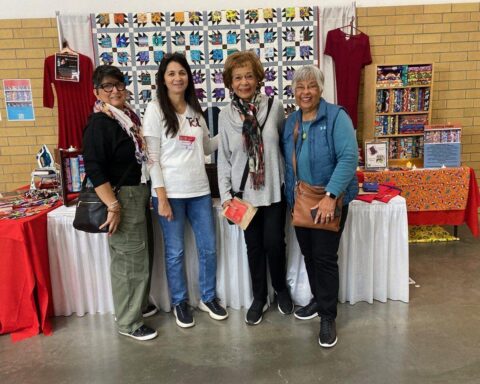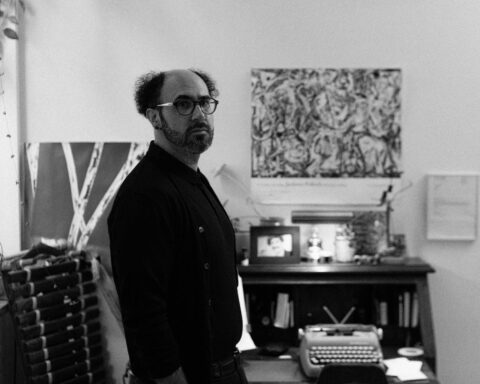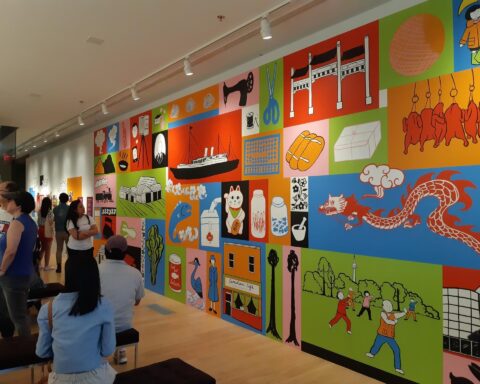Several thousand lucky people will be the first of many visitors to embark on a journey through human rights around the world, right in our own country. The stories included in the new Canadian Museum for Human Rights span from the violations of Aboriginal rights, to the Holodomor – the Soviet-led famine in Ukraine, to the Armenian and Rwandan genocides and the Holocaust, to name a few. But one inherently Canadian exhibit is missing from this national museum, critics say.
According to communications between the concerned parties and the museum, the first national internment operations of World War I in Canada have gone largely unexamined, prompting many of these parties to boycott the opening ceremonies.
Opening amidst controversy
This weekend marked the opening of the much anticipated – and highly discussed – Canadian Museum for Human Rights in Winnipeg, Manitoba. For a project that has been surrounded by as much by praise as it has been by criticism, there was no shortage of unhappy voices at the time of the would-be happy unveiling.
On Monday, September 15, in a letter to Canadian Museum for Human Rights CEO Stuart Murray, several parties made clear their grievances about the “farcical” lack of attention towards what they call a “Canadian story of the utmost importance.” The communities include Ukrainians, Poles, Serbians, Armenians, Hungarians, Croatians, Germans, Austrians and many others.
“The insignificant attention given to First World War era internment operations represents a slight to all of the internees, enemy aliens and their descendants,” the letter reads. “An enlarged photograph and one short film clip buried in a documentary film does not, in our view, constitute an acceptable treatment of Canada’s first national internment operations.”
This is not the first time – nor is it suspected to be the last – that the content of the museum has come under fire. The Ukrainian community has been one of the most vocal. They spoke out over a year ago, indicating that although the museum is largely funded by private donations of the prominent, Jewish Asper family, those donations should not reflect any sort of ‘hierarchy’ in the exhibits. The Holocaust has a permanent place in the museum.
The communities include Ukrainians, Poles, Serbians, Armenians, Hungarians, Croatians, Germans, Austrians and many others.
Angela Cassie, the director of communications and external relations at the CMHR, said at the time: “There is no hierarchy [of genocides] here, and any suggestions of that is a gross misrepresentation of our intentions at the CMHR. Those comments divide, when our goal is to bring people together to recognize the humanity in others and take action for human rights.”
Roman Zakaluzny of the Ukrainian Canadian Civil Liberties Association said that over a year later, the museum has still not displayed fairness to all exhibits.
“We’ve been trying to talk to them for years without a resolution,” Zakaluzny said. “It came to the point where they were going somewhere with it, and I think UCCLA would have sent a similar letter sooner … but when you have this many involved, it takes some time.”
Marsha Skrypuch’s grandfather George Forchuk was interned in Jasper, Alberta, during WWI. She said the museum has completely sidelined the topic, a topic which she asserts – having written three books on it – so much of the Canadian population knows nothing about.
A “Canadian” Museum
“This is supposed to be a Canadian museum, a museum of human rights that has stories about Canada,”Skrypuch said. “What’s the point of even having that if it’s not showcasing those stories? They’re telling stories that most people know and neglecting ones that have not been told well … portions of hidden history that are being hidden even more.”
The museum did not respond to multiple requests for comment.
But Israel Asper, the dreamer behind the museum who passed away in 2003, had his museum seen through by his daughter, Gail. She is the president of the board, and spoke with Jian Ghomeshi during his September 18 episode of Q, the eve of the opening.
“This is supposed to be a Canadian museum, a museum of human rights that has stories about Canada.”
During her interview, Asper fielded questions about the controversies and criticisms, all the while upbeat and excited about the discussion and information the museum was going to bring to the masses. When asked about the internment exhibits, Asper echoed the aggrieved’s passion.
“My dad said he wanted people to know Canadian history, warts and all,” Asper told Ghomeshi. “Because in order to understand where a country is, you have to know where we came from. And so, yes, all of these things are going to be discussed.”
Asper said she thought this had been “the most consultative process any museum as gone through,” but Skrypuch emphatically disagreed.
“He’s [Stuart Murray] refused to meet with anyone,” she said. “We want consultation, listening to people whose families were unjustly treated … but you can’t do that if you don’t meet with them.”
And on opening weekend, is it too late?
Zakaluzny said that with so many groups involved, it took time to form a collective message to send to the museum. Their goal, he said, was to make a point that contrary to what the museum made it look like, not everyone was on board with the museum’s plan.
“Is this museum really what it claims to be, or are there issues with it?” Zakaluzny said. “These are the questions the public – who are largely funding this museum – need to be asking.”
In that same interview with Ghomeshi, Asper said that the museum was constantly on the move to improve and change, to inspire people to learn more when they leave.
“Will this museum improve and need to be tweaked and changed?” Asper said. “Absolutely, because human rights are dynamic and changing.”
“[T]he CMHR does not enjoy the endorsement or support of our communities.”
Asper also urged critics to remember that when plans were released to the public 11 years ago, speculation and worry was inevitable because no one had stepped foot in the museum. Perhaps, when they see it, they will realize how much of an emphasis there is on the Canadian story.
“Of course the internments are a very, very important part of Canadian history,” she said. “In fact, the Canada gallery, ‘Canada’s Journey,’ is the largest exhibit in our museum.”
Zakaluzny said he and the fellow undersigned were trying to remain as optimistic as possible, knowing full well changes could be underway in the museum for years to come.
“We are very cautiously optimistic, but that optimism is fading,” he said.
The open letter of Sept. 15 concluded with these words and the following signatories, “We are making our views publicly known, and in advance of the CMHR’s opening, so there is no confusion: the CMHR does not enjoy the endorsement or support of our communities. Furthermore, we do not believe that the limited consultations held with stakeholder communities about the contents of this museum were given serious attention.”
Andrew Hladyshevsky, President of the Ukrainian Canadian Foundation of Taras Shevchenko
Olya Grod, Ukrainian Canadian Congress
Roman Zakaluzny, Ukrainian Canadian Civil Liberties Association
Borys Sydoruk, Ukrainian Canadian Civil Liberties Foundation
John Marion, President, Canadian-Croatian Chamber of Commerce
Ludwik Klimkowski, Canadian Polish Congress
Sima Aprahamian, Armenian Community
Suleyman Guven, Kurdish/ Alevi Community
Antony Bergmeier, German-Canadian Congress, National President
Diane Dragasevich, Serbian National Shield Society of Canada
Marsha Skrypuch, Internee Descendant
Christopher Adam, Editor-in-chief, Kanadai Magyar Hirlap (Canadian Hungarian Journal)




